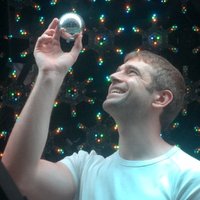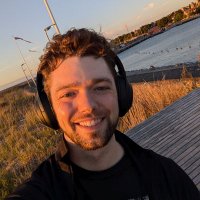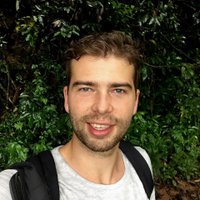
Sam Bond-Taylor
@sambondtaylor
Senior Researcher in Health Futures at @MSFTResearch. Previously PhD in deep generative models @comp_sci_durham. He/him.
ID: 1279160550753275906
https://samb-t.github.io 03-07-2020 21:10:33
47 Tweet
173 Followers
186 Following


Introducing RadEdit! We use diffusion image editing to stress-test biomedical vision models: diagnosing failures and helping avoid extra data collection. This is my first paper since joining Microsoft Research and started as an internship project with Pedro P. Sanchez & Boris van Breugel

We know "all models are wrong", partially because "all datasets are biased", but how wrong and how biased are they? Check out our latest Microsoft Research preprint on stress-testing with diffusion models to learn more. "Causality matters in medical imaging"!

Our paper ∞-Diff: Infinite Resolution Diffusion... was accepted at #iclr2024 Its a diffusion model defined in an ∞-dimensional Hilbert space. Sample higher res than the training set (non-blurry). Paper: openreview.net/pdf?id=OUeIBFh… with Sam Bond-Taylor Comp Sci @ Durham #ai #research





Rᴀᴅ-DINO is now on arXiv!🦖 We show that medical image encoders trained only on images perform similar or better than text supervised models on various benchmarks, demonstrating that reliance on text may not be necessary, and can become a potential limitation. Microsoft Research


Tim doesn't stop to amaze me, head here to read where Tim Dettmers describes the working of the paged AdamW github.com/TimDettmers/bi… He basically built a linux cpu memory paging system but for GPU/CUDA. So when you run out of GPU memory instead of OOM, the unused memory blocks

[Job Alert] Associate/Assistant Professor in Artificial Intelligence for Space-Enabled Technologies at Durham University Perks: 1️⃣fully 'tenured' in US terminology at a top 100 Uni 2⃣reduced teaching 3⃣a funded PhD 4⃣travel budget 5⃣chance for a funded PostDoc shorturl.at/otwHQ
![Hubert P. H. Shum (@hubertshum) on Twitter photo [Job Alert] Associate/Assistant Professor in Artificial Intelligence for Space-Enabled Technologies at
<a href="/durham_uni/">Durham University</a> Perks: 1️⃣fully 'tenured' in US terminology at a top 100 Uni 2⃣reduced teaching 3⃣a funded PhD 4⃣travel budget 5⃣chance for a funded PostDoc shorturl.at/otwHQ [Job Alert] Associate/Assistant Professor in Artificial Intelligence for Space-Enabled Technologies at
<a href="/durham_uni/">Durham University</a> Perks: 1️⃣fully 'tenured' in US terminology at a top 100 Uni 2⃣reduced teaching 3⃣a funded PhD 4⃣travel budget 5⃣chance for a funded PostDoc shorturl.at/otwHQ](https://pbs.twimg.com/media/GFCMkdAXwAEEjTJ.jpg)


🔥 Our new preprint on biomedical self-supervised learning with images only is out! 🔥 Rᴀᴅ-DINO: Exploring Scalable Medical Image Encoders Beyond Text Supervision by Microsoft Research We show that: 0/3 🧵


Congratulations to Sam Bond-Taylor (Sam Bond-Taylor) for successfully defending his thesis on "Modelling High-Dimensional Data with Likelihood-Based Generative Models" Comp Sci @ Durham Durham University Thanks to the examiners Haiping Lu Amir Atapour-Abarghouei.



👀A sneak-peek at our recent work accepted at #ECCV2024 European Conference on Computer Vision #ECCV2026 ! 📜: arxiv.org/abs/2407.12753… Want a scalable and robust foundational model that also saves computational costs? Say hello to LookupViT, our information compression idea leading to sub-quadratic attention! (1/10)



This morning we released RadEdit's weights on Hugging Face 🤗. RadEdit is a state-of-the-art latent diffusion model to generate chest X-rays conditioned on text inputs, and an editing pipeline designed for model stress-testing. huggingface.co/microsoft/rade… (Cc Cyril Zakka, MD) 🧵2/9

Discrete generative models use denoisers for generation, but they can slip up. What if generation *isn’t only* about denoising?🤔 Introducing DDPD: Discrete Diffusion with Planned Denoising🤗🧵(1/11) w/ Juno Nam Andrew Campbell Hannes Stärk Yilun Xu Tommi Jaakkola RGB Lab @ MIT


Is pixel diffusion passé? In 'Simpler Diffusion' (arxiv.org/abs/2410.19324) , we achieve 1.5 FID on ImageNet512, and SOTA on 128x128 and 256x256. We ablated out a lot of complexity, making it truly 'simpler'. w/ @tejmensink Jonathan Heek Kay Lamerigts Ruiqi Gao Tim Salimans






